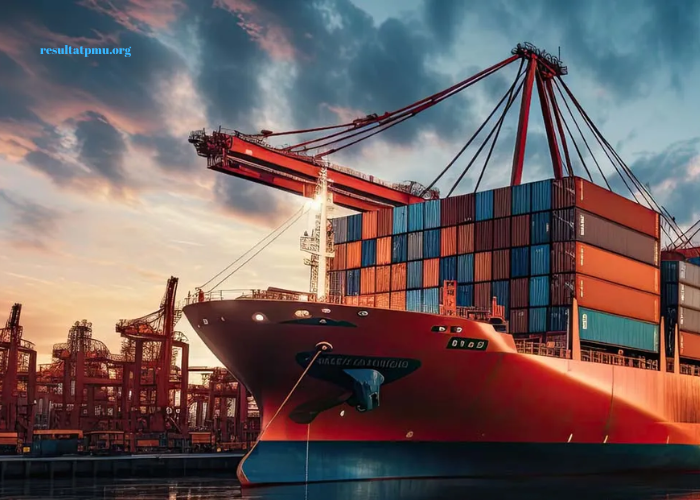In today’s interconnected world, global trade has become a powerful driver of economic growth, fostering innovation, competition, and collaboration across borders. One of the most dynamic aspects of global trade today is the rise of emerging markets, which offer significant growth opportunities for businesses looking to expand their international footprint. Emerging markets, which typically refer to countries undergoing rapid industrialization and economic development, have become increasingly important players in the global economy. This article delves into the key trends shaping global trade with a focus on expanding in emerging markets, the challenges faced by businesses, and the strategies for success in these regions.
The Importance of Emerging Markets in Global Trade
Emerging markets, often found in regions such as Asia, Africa, Latin America, and parts of Eastern Europe, represent countries that are transitioning from low-income, developing economies to more industrialized, market-driven economies. Countries like China, India, Brazil, and South Africa are among the most prominent examples, but many others are rapidly making their mark on the global stage.
These markets hold tremendous importance in global trade for several reasons:
- High Growth Potential: Emerging markets often experience faster economic growth compared to developed economies. According to the International Monetary Fund (IMF), emerging markets and developing economies grew at a rate of 4.7% in 2022, significantly outpacing the growth rate of advanced economies. This higher growth is driven by factors such as increasing industrialization, rising consumer demand, and infrastructure development.
- Expanding Middle Class: The rise of a burgeoning middle class in emerging markets has led to increased consumer demand for goods and services, particularly for products that are typically associated with higher incomes, such as electronics, automobiles, and luxury goods. As millions of people move out of poverty and into the middle class, their purchasing power grows, creating new opportunities for international businesses to tap into these markets.
- Favorable Demographics: Emerging markets are often characterized by younger populations compared to developed economies, which face aging populations and shrinking workforces. A younger, more dynamic workforce drives innovation, consumption, and investment, creating an ideal environment for trade and business expansion.
- Diversifying Trade Partnerships: As traditional trade powerhouses such as the U.S., the European Union, and Japan face slower growth, emerging markets offer diversification opportunities for countries and companies seeking new trade partnerships. This diversification helps reduce risks associated with dependence on a few key markets and promotes global economic stability.
- Natural Resources and Commodities: Many emerging markets are rich in natural resources such as oil, minerals, and agricultural products. Countries like Brazil, Russia, and Indonesia are major exporters of raw materials and commodities, making them key players in global supply chains. This offers opportunities for businesses involved in sectors such as energy, mining, and agriculture to engage with these markets.
Key Global Trade Trends in Emerging Markets
Emerging markets are shaping the future of global trade in several significant ways. As these economies evolve, certain trends have emerged that are influencing how businesses approach expansion and trade strategies in these regions.
Shift Towards South-South Trade
Historically, global trade has been dominated by trade flows between developed economies (North-North trade) or between developed and developing economies (North-South trade). However, a significant shift is underway, with more trade occurring between emerging markets themselves—referred to as South-South trade.
For instance, trade between China and Africa has grown exponentially over the past decade, with China becoming Africa’s largest trading partner. Similarly, trade between Latin American countries and Asia, particularly with countries like China and India, has surged, creating new economic corridors. This trend is indicative of emerging markets’ increasing reliance on each other for trade, which diversifies trade patterns and reduces dependence on traditional Western markets.
Technological Advancements and Digital Trade
Technological advancements are playing a crucial role in shaping global trade, especially in emerging markets. The rise of digital trade, e-commerce, and mobile technologies has opened up new avenues for businesses to access consumers in these regions. With increasing internet penetration and the growing use of smartphones, more consumers in emerging markets are turning to online platforms for shopping, banking, and communication.
Countries like India, Brazil, and Nigeria have seen a rapid growth in e-commerce, driven by increasing internet access, mobile payment solutions, and logistical improvements. The expansion of digital infrastructure allows businesses, both large and small, to reach new customers in remote areas, enhancing trade opportunities. For example, Amazon and Alibaba have made significant investments in logistics and digital platforms to cater to the growing middle class in these markets.
Green Trade and Sustainable Development
As the global focus on sustainability intensifies, businesses are increasingly looking at how they can incorporate environmentally responsible practices into their trade strategies. Emerging markets are playing a critical role in this shift, with many countries embracing green technologies and sustainable practices to address the environmental challenges posed by rapid industrialization and urbanization.
For instance, renewable energy investments in emerging markets such as China, India, and South Africa are accelerating, driven by both governmental policies and private sector initiatives. Companies involved in clean energy technologies, waste management, and sustainable agriculture are finding new opportunities to expand their trade in these markets, aligning with global efforts to combat climate change.
Regional Trade Agreements and Economic Integration
Regional trade agreements and economic integration initiatives are reshaping trade dynamics in emerging markets. Organizations such as the Association of Southeast Asian Nations (ASEAN), the African Continental Free Trade Area (AfCFTA), and the Mercosur trade bloc in South America are working to reduce trade barriers and promote intra-regional trade. These agreements facilitate easier movement of goods, services, and capital, making it more attractive for businesses to expand within these regions.
For example, the AfCFTA, which came into effect in 2021, is expected to create the largest free trade area in the world by population. This agreement aims to boost intra-African trade by reducing tariffs and harmonizing trade regulations, providing businesses with greater access to a market of over 1.2 billion people. Such initiatives are crucial in promoting economic growth, reducing poverty, and enhancing trade within emerging markets.
Supply Chain Diversification
The COVID-19 pandemic exposed vulnerabilities in global supply chains, prompting businesses to reconsider their reliance on a few key markets for production and sourcing. As a result, many companies are diversifying their supply chains by expanding into emerging markets to reduce risks and enhance resilience. This trend, known as “nearshoring” or “friendshoring,” involves shifting production closer to home markets or to countries with more stable political and economic environments.
Emerging markets such as Vietnam, Mexico, and Turkey have benefited from this trend, attracting investments from multinational corporations looking to diversify their manufacturing bases. Vietnam, for example, has emerged as a key alternative to China for electronics manufacturing, while Mexico has attracted U.S. companies seeking to relocate production closer to North America.
Challenges of Expanding in Emerging Markets
While the opportunities in emerging markets are vast, businesses looking to expand in these regions must navigate several challenges. Understanding these obstacles and preparing for them is crucial for long-term success.
Political and Economic Instability
Emerging markets are often characterized by higher levels of political and economic volatility compared to developed economies. Issues such as corruption, political unrest, regulatory unpredictability, and currency fluctuations can pose significant risks to businesses. For example, countries like Argentina and Venezuela have experienced economic crises, making it difficult for businesses to operate in these environments.
To mitigate these risks, businesses must conduct thorough risk assessments, engage with local stakeholders, and adopt flexible strategies that can adapt to changing political and economic conditions.
Infrastructure and Logistics Constraints
In many emerging markets, infrastructure development has not kept pace with economic growth, leading to challenges in transportation, logistics, and supply chain management. Poor road networks, limited access to ports, and unreliable energy supplies can hinder the efficient movement of goods and services.
Investing in local infrastructure, partnering with local companies, and leveraging technology to overcome logistical challenges are key strategies for overcoming these barriers.
Cultural and Regulatory Differences
Navigating the cultural, legal, and regulatory landscape in emerging markets can be complex. Differences in business practices, consumer behavior, and regulatory frameworks require companies to adopt localized approaches. For instance, what works in Western markets may not necessarily resonate with consumers in emerging markets, where cultural norms and preferences vary widely.
Businesses must invest in understanding local markets, building relationships with local partners, and adapting their products, marketing strategies, and business models to meet the unique needs of each market.
Competition from Local Players
As emerging markets grow, local companies are becoming increasingly competitive and sophisticated. In many cases, these companies have a deep understanding of the local market, established distribution networks, and strong brand loyalty, making it challenging for foreign businesses to enter and compete.
To succeed, international businesses need to differentiate themselves by offering unique value propositions, building strong local partnerships, and leveraging their global expertise while respecting local customs and preferences.
Strategies for Success in Emerging Markets
To capitalize on the opportunities presented by emerging markets, businesses need to adopt well-thought-out strategies that align with the unique characteristics of these regions. Some key strategies for success include:
- Local Partnerships: Partnering with local businesses, distributors, or suppliers can help international companies navigate the complexities of emerging markets. Local partners offer valuable insights into consumer behavior, regulatory requirements, and business practices.
- Adaptation and Localization: Adapting products, services, and marketing strategies to suit local tastes and preferences is crucial. This may involve customizing product offerings, adjusting pricing models, or tailoring marketing campaigns to resonate with local consumers.
- Investing in Talent: Building a strong local workforce is essential for success in emerging markets. Hiring and training local talent not only helps businesses understand the market better but also fosters goodwill with local communities.




